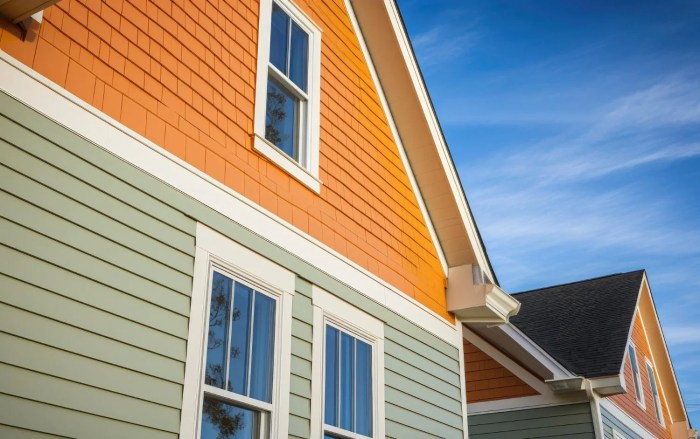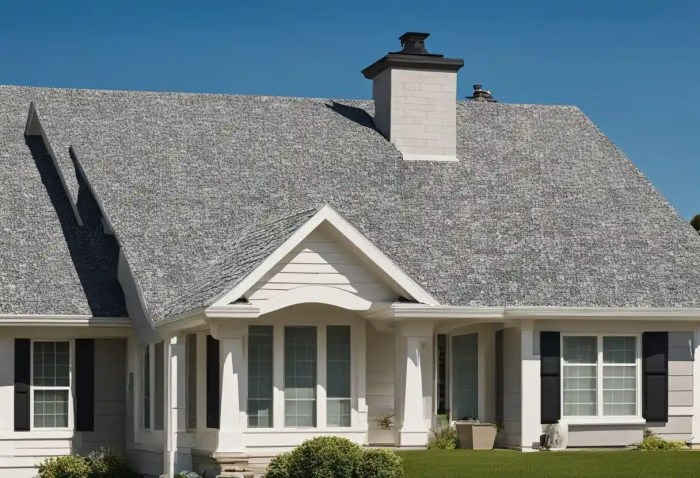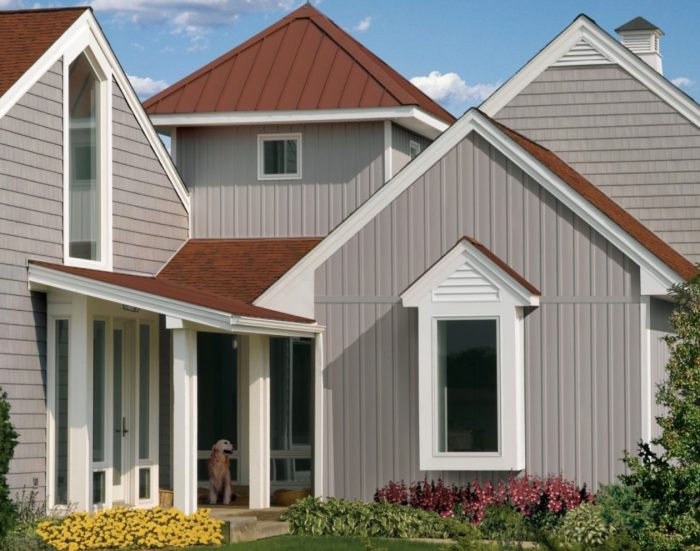The Ultimate Guide to Choosing the Best Siding for Homes
Exploring the world of siding options for homes, this guide dives deep into the factors to consider when selecting the best siding material. From durability to cost considerations, this comprehensive overview will help you make an informed decision for your home.
Types of Siding Materials

Vinyl, wood, fiber cement, and metal are some of the most common types of siding materials used for homes. Each material has its own unique characteristics and benefits that make it suitable for different preferences and needs.
Vinyl Siding
Vinyl siding is popular for its durability and low maintenance requirements. It is resistant to rot, fading, and insect damage, making it a long-lasting option for homeowners. However, extreme weather conditions can cause vinyl siding to crack or warp over time.
Wood Siding
Wood siding offers a classic and natural look to homes. While it requires more maintenance compared to other materials, proper care can help prolong its lifespan. Wood siding is prone to rot, insect infestation, and water damage if not maintained regularly.
Fiber Cement Siding
Fiber cement siding is a versatile option that can mimic the look of wood or masonry. It is durable, fire-resistant, and low maintenance. However, it can be more expensive than other materials and may require professional installation.
Metal Siding
Metal siding is known for its strength and longevity. It is resistant to fire, rot, and insect damage, making it a durable choice for homes. Metal siding can be prone to dents and scratches, especially in areas with high winds or hailstorms.
Factors to Consider
When choosing the best siding for homes, several factors need to be taken into consideration to ensure the overall effectiveness and satisfaction with the choice made.
Climate Consideration
Climate plays a crucial role in determining the most suitable siding material for a home. Different materials react differently to various weather conditions such as extreme heat, cold, rain, or humidity. For example, vinyl siding is known for its durability and resistance to moisture, making it a popular choice in areas with high humidity or frequent rainfall.
On the other hand, wood siding may require more maintenance in regions with extreme temperature changes to prevent warping and rotting.
Impact on Energy Efficiency
The siding material can significantly impact the energy efficiency of a home. Some materials provide better insulation properties than others, helping to regulate indoor temperatures and reduce energy consumption for heating and cooling. For instance, insulated vinyl siding or fiber cement siding can improve the overall energy efficiency of a home by preventing heat loss during the winter and heat gain during the summer.
Aesthetic Appeal and Design Options
Apart from functionality, the aesthetic appeal and design options available for different siding materials should also be considered. Each material offers a unique look and texture that can enhance the curb appeal of a home. For example, wood siding provides a classic and natural appearance, while metal siding offers a modern and sleek design.
Homeowners can choose from a wide range of colors, finishes, and styles to achieve the desired look for their property.
Cost Considerations
When it comes to choosing the best siding for your home, cost is a crucial factor to consider. The initial cost and long-term expenses associated with different siding materials can vary significantly, impacting your budget and overall satisfaction with the investment.
Comparing Initial vs Long-Term Costs
- Wood siding may have a higher initial cost compared to vinyl or fiber cement, but it can be more cost-effective in the long run due to its durability and timeless appeal.
- Vinyl siding is often the most affordable option upfront, but it may require more frequent maintenance and replacement over time, leading to higher long-term costs.
- Fiber cement siding falls somewhere in between wood and vinyl in terms of initial cost and long-term durability, making it a popular choice for many homeowners seeking a balance between budget and quality.
Cost-Effectiveness and Maintenance
- Consider the maintenance requirements of each siding material when evaluating cost-effectiveness. Wood siding may need regular staining or painting, adding to maintenance costs over time.
- Vinyl siding is relatively low maintenance but may become brittle or fade over the years, potentially requiring replacement to maintain the aesthetic appeal of your home.
- Fiber cement siding is known for its durability and resistance to rot, insects, and fire, reducing maintenance costs and prolonging the lifespan of your siding investment.
Choosing Based on Budget Constraints
- Assess your budget constraints and long-term financial goals when selecting a siding material. While upfront costs are important, consider the overall value and longevity of the siding to make a cost-effective decision.
- Consult with siding professionals to get accurate cost estimates for installation, maintenance, and potential repairs to determine the best siding material that fits within your budget constraints.
Installation Process
When it comes to installing siding on a home, there are general steps that need to be followed to ensure a successful outcome. Hiring professionals for the installation versus attempting a DIY approach can make a significant difference in the final result.
Each type of siding material also comes with its own set of considerations and challenges during the installation process.
General Steps for Siding Installation
Before the actual installation begins, it is crucial to prepare the exterior walls of the home by cleaning and inspecting them for any damage. The next steps typically involve measuring and cutting the siding panels to fit the specific dimensions of the house.
Once the panels are ready, they are installed from the bottom up, starting with the corner pieces and working towards the top.
Importance of Hiring Professionals
While some homeowners may be tempted to save money by tackling siding installation as a DIY project, it is important to note that professionals have the expertise and experience to ensure a seamless and durable installation. Professionals can also identify any underlying issues with the home's exterior that may need to be addressed before the siding is installed.
Considerations for Different Siding Materials
- Vinyl Siding:Vinyl siding is relatively easy to install, but proper technique is essential to prevent warping or buckling. It is crucial to leave room for expansion and contraction.
- Fiber Cement Siding:Fiber cement siding is heavy and requires special cutting tools for installation. It is important to follow manufacturer guidelines closely to ensure a successful installation.
- Wood Siding:Wood siding requires regular maintenance and sealing to prevent rot and insect damage. Proper installation techniques, including back priming, are crucial for longevity.
- Aluminum Siding:Aluminum siding can dent easily during installation, so care must be taken during handling. Proper fastening techniques are crucial to prevent panels from coming loose.
Conclusive Thoughts
In conclusion, the choice of siding for your home plays a significant role in its overall aesthetics, durability, and maintenance. By weighing the factors discussed in this guide, you can confidently choose the best siding that meets your needs and enhances the beauty of your home.
FAQ Summary
What is the most durable siding material?
Vinyl siding is known for its durability and low maintenance, making it a popular choice for many homeowners.
How does climate affect the choice of siding material?
Climate plays a crucial role in selecting the best siding for homes. For example, in regions with extreme weather, fiber cement siding might be more suitable due to its durability.
Is DIY installation of siding recommended?
While DIY installation can be cost-effective, hiring professionals ensures a proper and efficient installation, especially for complex siding materials like fiber cement.




